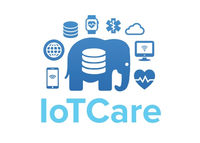Airports:
Ferihegyi nemzetközi repülőtér (Ferihegy International Airport) with 3 terminals 15km from the city centre: Ferihegy 1 receives discount airlines, Ferihegy 2A terminal is for planes within Shengen area, terminal 2B is at the disposal of the non-Schengen airlines.
To/From the airport
Public transport. The main public transit connection from the airport to the city is to take bus 200E from the airport to metro M3 (blue line)Kőbánya-Kispest' (~25 minutes) and then to continue within the metro system (~20-30 minutes to city centre). (See Get Around for ticket information.) The route is well marked with signs and the bus runs frequently. The bus stops almost right next to the metro stop, but be prepared to carry luggage up or down some stairs.
It is also possible to take the 200E bus to the local Ferihegy train station and continue on the MAV network to Nyugati station in Budapest or other rail destinations.
Taxi.
The only contracted taxi operator from Liszt Ferenc airport is Főtaxi . Depending on your destination, the cost for a trip to Budapest will range from 5,000 to 10,000 HUF. (Taxis now universally cost 450 HUF base price and 280 HUF for every kilometer. The inner city is around 20 kilometers from Terminal 2.)
Airport Shuttle
**Official shuttle AirportShuttle**
is the official airport shuttle partner. It is a shared mini-van that collects passengers going in the same direction and provides door to door service. Tickets start at 3200 HUF with discounts for round trips or multiple passengers.
Main railway stations:
Nyugati (Western), Keleti (Eastern), Déli (South) and Kelenföldi pályaudvarok
Coaches:
There are coaches to & from 15 different countries (Austria, Belgium, Bosnia and Herzegovina, Bulgaria, Croatia, France, Germany, Great Britain, Italy, Montenegro, Netherlands, Poland, Romania, Serbia, Slovenia), but via their partners they can provide transport to other 5 countries (Czech Republic, Greece, Switzerland, Slovakia, Ukraine). (https://www.eurolines.hu/en/about-us/eurolines-hungary)
- Subway (Metro)
Budapest has three subway lines
- Yellow Street Cars
Budapest has a vast system of Yellow Streetcars
- Trolley Buses
Trolley bus service is available on 13 routes in Pest only. Trolley buses are numbered starting from 70 because the first route began operations on Stalin's 70th birthday in 1949.
– The majority of people in Budapest using mass transit travel by bus. There are over 200 routes, and express buses with red number signs serve the busiest routes in the city. They travel along the same route as the regular buses with black number signs, but make fewer stops. Buses are also prevalent in the Buda Hills.
CURRENCY EXCHANGE
It is better to obtain Hungarian Forints upon arrival to Hungary than to exchange it with a bank at home, as local Hungarian banks work with better rates than their counterparts abroad. Exchanging foreign currency into Forints is therefore possible in banks, official currency exchange offices (these are affiliates of larger banks) and travel agencies.
It is important to know that all official currency exchange offices determine the exchange rate on their own accord.
Under no circumstances you should change money illegally in the street: beside the possible legal consequences, it is highly probable that you will be cheated in one of the hundred possible ways the street criminals can devise.
1.000 HUF = 3,19 €
1.000 HUF = 3,57 USD






































